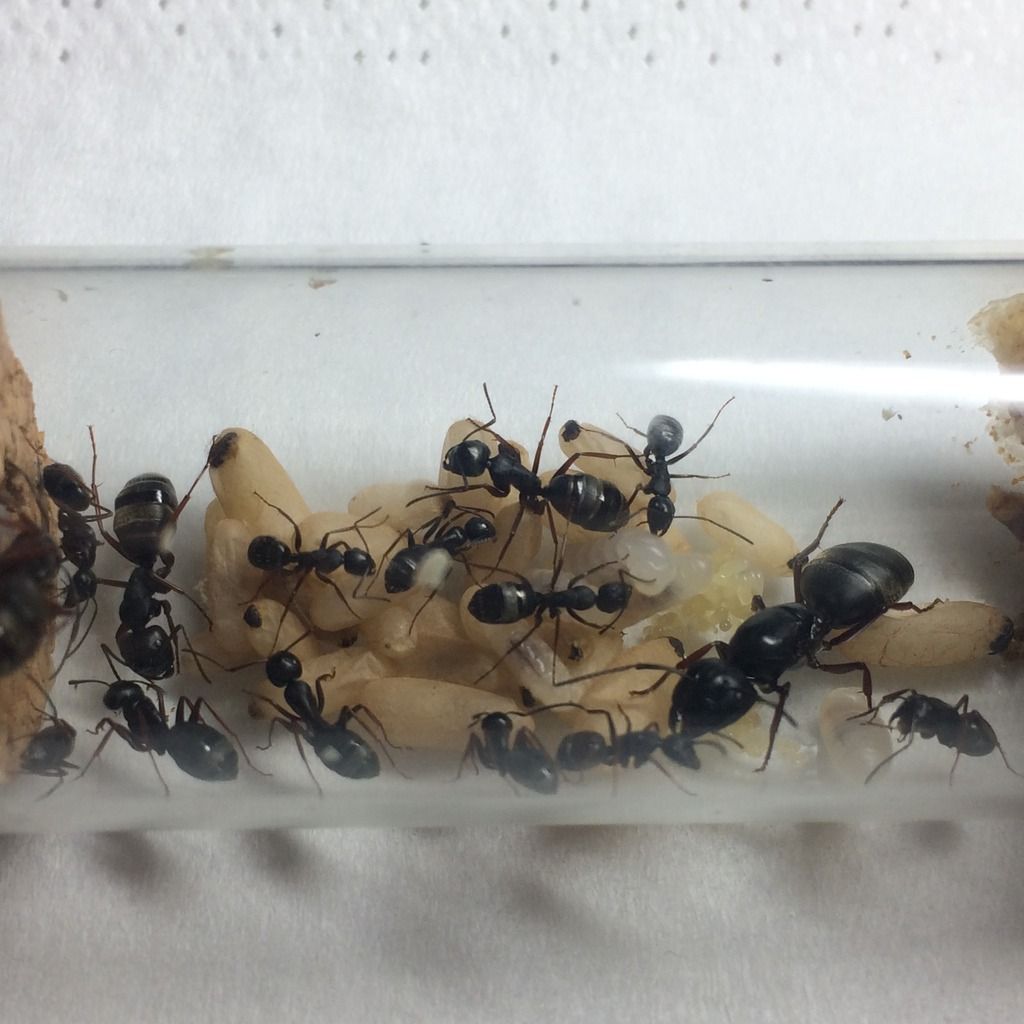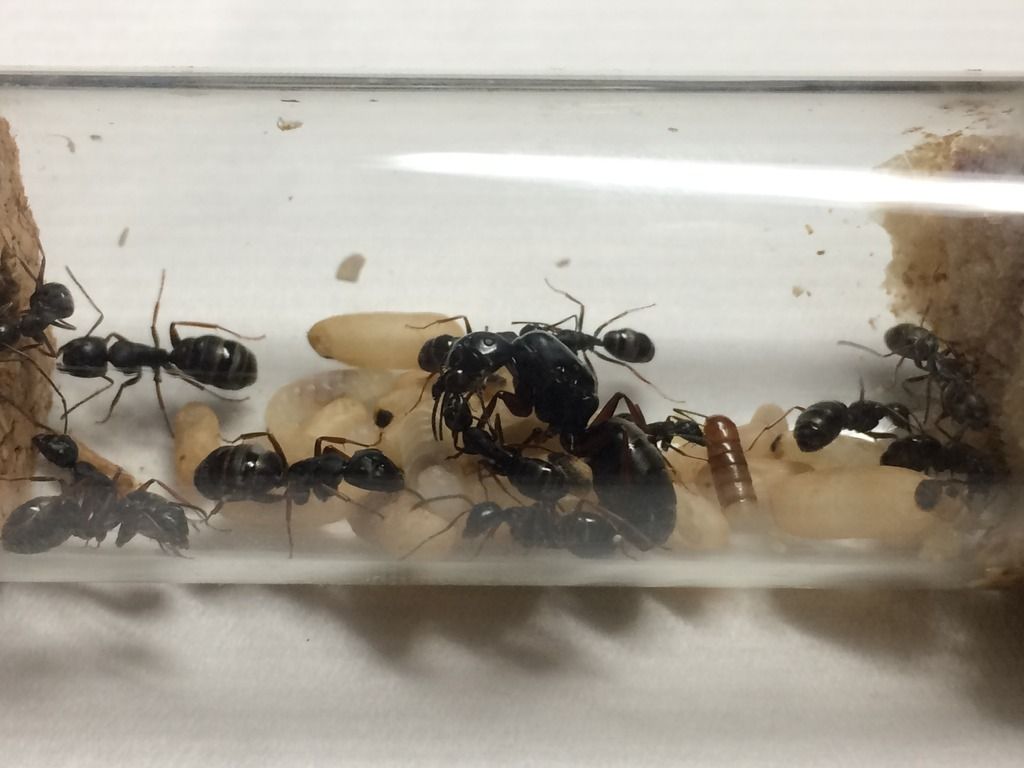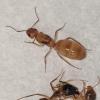If you may or may not remember my friends found this Camponotus queen on a Thursday sometime during May last year. There were quite a few queens around an area but they ran away with their workers or with no workers, this queen was found at a different area at the base of a tree.
I later identified these to be C.modoc because of the red legs. C.modoc is also the dominant carpenter ant species around here.
The colony started off with 6 workers however later during August, 2015 one of them died (for unknown reasons). Just a note that brood development completely halted during mid summer last year. Anyways they went into hibernation during early September if I recall and came out of Hibernation early February. Immediately brood resumed developing and 2 workers eclosed a week ago.
The colony currently has 7 workers (5 nanitics and 2 workers) along with 2 pupae, around 5 large larvae (one is attempting to pupate) and 6 smaller larvae. Along with 2 piles of eggs.
Video from March 16
There's some weird mycelium stuff growing on the dirt in the test tube, I've noticed it is naturally found in the dirt here and does very well in an artificial environment especially when another organic compound is nearby (e.g cotton or insect bits). So far it doesn't seem like it's affecting the ants.
Note: I also had another queen but I am unable to get her to rear brood or eggs. Guess she is a dud.
As you can see when it comes to journals I am very inconsistent. ![]()
Edited by LC3, June 3 2018 - 11:35 AM.

































